
But there is much splendour in this city, lying within the shadow of the great rocky outcrop with its crown of pillars and pediments, such as the Roman Forum, dating from the first century AD, with its octagonal Tower of the Winds built in 50 BC by Syrian astronomer, Andronikos Kyrrhestas, that once contained a water clock powered by a stream flowing from the Acropolis…

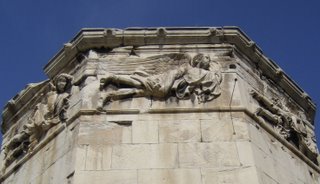
This district became the Agora, or marketplace, and from here one can walk to the site of the old Agora: the vast area that for 1,200 years was the heart of Athens and contained a mass of temples, baths, administrative buildings and the first parliament where its fifty members lived and worked, earning it the name Tholos or ‘beehive’.
In contrast with the sun-bleached marble-dusted surroundings of the Acropolis, the Agora is an oasis of greenery with groves of oaks, olives and pines...

The trees shade the now grassy paths that now run between the remains of a place where the principles of democracy were birthed, where Socrates taught and where St Paul preached the sermon that marked the transition from the pantheistic age of many gods to age of the one God of Judaism and belief in Christianity:
“Men of Athens, I perceive that in every way you are very religious. For as I passed along, and observed the objects of your worship, I found also an altar with this inscription, ‘To an unknown god.’ What therefore you worship as unknown, this I proclaim to you. The God who made the world and everything in it, being the lord of heaven and earth, does not live in shrines made by man, nor is her served by human hands, as though he needed anything, since he himself gives to all men life and breath and everything…”
Just how radical this address must have been at the time hits you with startling clarity when you realise that these words were spoken within site of so many splendid shrines and places of worship including the remarkably preserved Temple of Hephaestus which was jointly devoted to Athena and the god of fire who served as blacksmith-extraordinaire to the pantheon and by whose hammer-blow to the skull of the great Zeus, Athena sprang forth into the world in a full set of battle armour - a reminder that one should never underestimate anyone named Smith!

Even from the imposing portico of the Temple of Hephaestus, however, the Acropolis and the Parthenon still draw one's eye to the horizon…
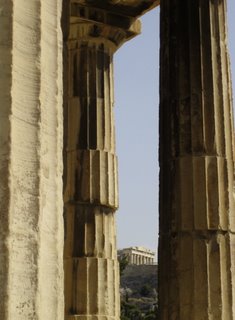
Evidence of the clash and collision of cultures is everywhere as, for example, the 11th Century Byzantine church which was erected on the remains on a 2nd Century Nymphaion, or fountain house: the waters of the nymphs and naiads of arcadian Greece being subsequently diverted to the Christian baptismal font, just as the rumbustuous, waring gods were ousted in favour the solemn, beared God of Abraham...
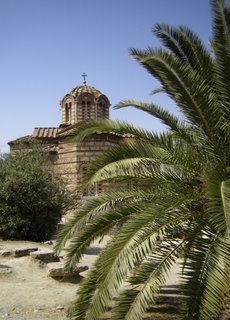

Walking any city for the first time, the eye eagerly devours the images, contrasts and juxtapositions that it sees but which - on later visits - seem merely commonplace. Here are some visual memories (click on pictures to enlarge) of our first two days in Athens…
Pines…

Taverna chairs…
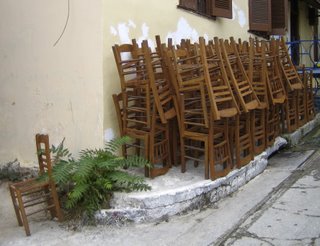
Street musicians…

Diners from out-of-town…

Love-birds…

Masks...

Signs…

Sun-worshippers…
This one was a member of the technical crew for the annual Athens Festival snatching an hour in the sun during his lunch break in the Herodes Atticus Theatre!

Erotica…

Collonades…
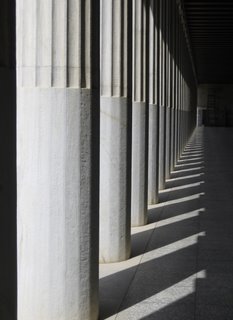
Graffiti…

Vistas...
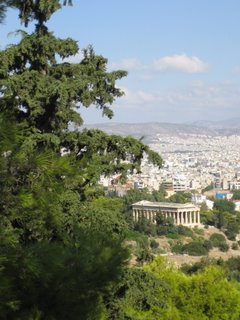
Cats…

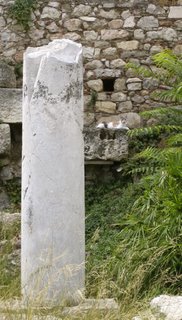
[Images: © Brian Sibley & David Weeks]
No comments:
Post a Comment